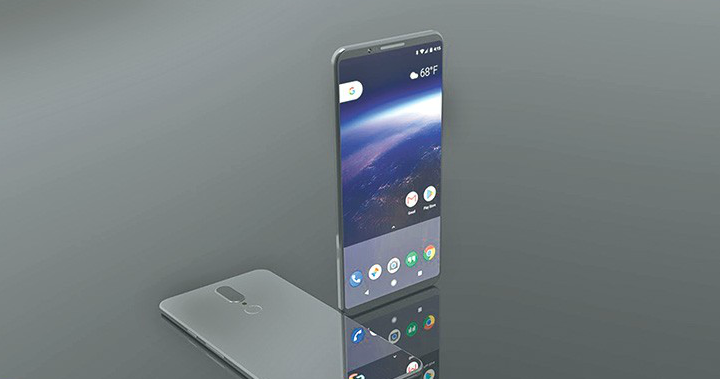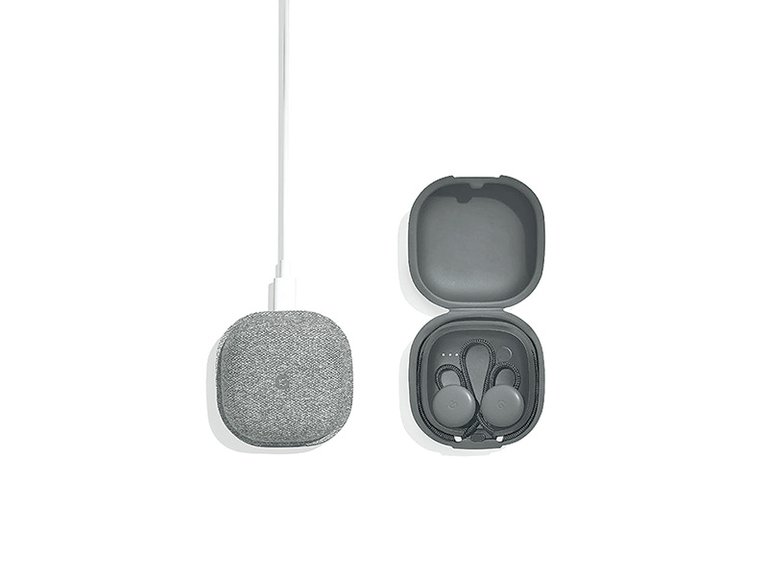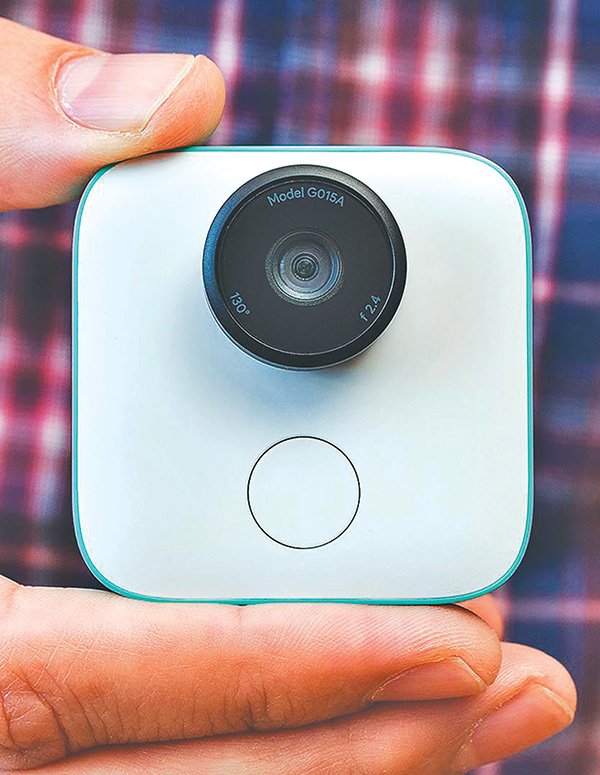
Oct 10, 2017-On October 4, in a high-anticipated event, Google launched a varied set of products ranging from smartphones and voice assistants to speakers, cameras and wireless earphones. In case you have been wondering about what exactly Google has laid out this year, here’s a brief walk through.
Google kicked off its own line of hardware production last year with the Google Pixel. For a company focusing primarily on software delivery to the customers, this was a huge leap. This year, Google has come up with Pixel 2 and Pixel 2 XL. Both these phones come in a metal body. Flagship phones from Apple and Samsung always feature fragile glass backs for easier wireless communication, but Google chose to solve this issue elegantly by using a glass window at the top of the phone. In the launch event, Google also emphasised on the software and Artificial Intelligence attributes of these phones.
![]()
Both phones are powered by Qualcomm Snapdragon 835 SoC coupled with 4GB of RAM and come with Google’s latest and greatest offering; Android Oreo, right out of the box and feature a redecorated Pixel launcher with a neater user interface. The Google Pixel 2, made by HTC, shows off a 5.0-inch full HD display with some large bezels on the top and bottom whereas the higher variant; Pixel 2 XL, flaunts a near bezel-less display with 18:9 aspect ratio and quad HD quality.
However, the most applauded feature of both of these new releases is their camera. They both come with 12.3 megapixel camera with record high DxOMark score of 98. Only recently, the latest offerings from Apple and Samsung, iPhone 8 Plus and Galaxy Note 8, respectively, scored 94 in that test.
The camera sensors on these devices work along with machine learning to capture pictures with field-of-depth. Even the front-facing 8-megapixel camera can capture pictures in ‘portrait mode’. With Optical Image Stabilisation and Electronic Image Stabilisation the cameras have f/1.8 aperture and can shoot videos in 4K. The lack of headphone portal in both sets, however, has been frowned upon by many.
Both phones have the ‘Active Edge’ feature which triggers Google Assistant by a mere squeeze on the sides and come with a 3,520 mAh battery with Quick Charge 3.0 functionality. They are splash resistant and support unlimited storage on Google Photos.

The price of Pixel 2 starts at $649 while the Pixel XL comes in at $849 with prices reaching up to $949. Since there are no fixed distributors of Google Pixel devices in Nepal, we might not see its official launch here; however, the devices might be available through tech retailers with a slightly inflated price rate.
Pixel Buds
Google made up for the lack of headphones on Google Pixel 2 and Pixel 2 XL with Pixel Buds. Pixel Buds are the trademarked set of wireless headphones from Google which have more functions than just listening to audio files. These ear-buds can
be monitored using a touch-sensitive control on the right bud which
allows users to tap to play/pause music, to change volume, and allows a connection to Google Assistant which offers users a communication channel through which the Google Assistant can read out notifications and messages to the users. Moreover, this will enable users to activate their own personal Google on-the-go by communicating their needs to the Google Assistant. All a user needs to do is open the case and a Pixel Smartphone or any other Android phone with version 7.0 Nougat software and Google Assistant will connect them automatically.
As these Pixel Buds are ear-buds, not in-ear headphones, they don’t fit into your ear canal, but instead nestle into your outer ear and stay anchored in place by a small loop formed by the cord.
These buds come with a 120mAh battery and a 620mAh cloth-covered charging case. Google says that they should last about five hours on a single charge. The company claims that the case will allow for 24 hours of listening time on the Buds.
The most intriguing feature of the Pixel Buds is the integrated Google Translate feature which was demoed on stage at the launch event by two Pixel Bud wearers: a native English speaker and a native Swedish speaker who held a conversation with one another in their native language that was translated by Pixel Bud in real time. Using the existing Google Translate data and infrastructure, the Pixel Buds are able to comprehend conversations in over 40 different languages.
Pixel Buds are available now for pre-orders, priced at $159. This is Google’s attempt at letting people get more work done without having the need to look at their smartphones.

Google smart speakers
One of the most affordable products from the launch event, Google Home Mini comes with a price tag of just US$ 49. Minimalistic and small, it can be easily placed anywhere at home. And as these speakers can be covered by fabric and comes in simple circular designs and subtle colours, swiftly blending into its surroundings. This speaker uses a MicroUSB and contains four lights on the top to indicate whether the Google Home Mini is listening or thinking. The circular design of this speaker allows 360 degree sound, and Google claims that this speaker will go head to head with the likes of Amazon Echo, Amazon Dot, and Apple Home Pod.
Google Home Max, on the other hand, is much more AI oriented. It comes with Google’s Machine learning, called Smart Sound along with Google Assistant, which adapts the sound from the speaker based on the environment that the user is in. With its intelligent equaliser, the speaker identifies the type of audio that you’re listening to, and provides the best audio possible for the respective content. Wherever you place the speakers, either in the corner or the centre of the room, it identifies those areas and provides an unadulterated sound experience automatically. For instance, the Google Home Max lowers the audio in the morning and when your dog is barking in the background it automatically increases the volume. The best part is that even your faintest “OK Google” will be detected by the Google Home Max in case you need to send in a command to the speaker.
The Google Home Max comes in a rectangular form factor with minimal design and can be placed either vertically or horizontally with the use of its magnetic base plate. It comes with two 4.5-inch-high excursion woofers and custom tweeters that can easily cover a large living area. You can connect it with Bluetooth or use a direct aux cable. It also comes with USB C. The Google Home Max, with all its futuristic features, comes with the price of US$ 399 and with that, you get YouTube Music Ad Free for 12 months.
Google Pixelbook
Google Pixelbook, the first-ever laptop from Google, has much more to offer besides the 12.3 inch 1440p touch display with 3:2 aspect and a pixel density of 235. Available in three different versions, the Pixelbooks come with top of the line specs, lag-less performance, high security, and support for Android apps.
Arguably the thinnest and lightest laptop ever, the Pixelbook weighs in at 1kg and is 10mm thick and features a 4-in-1 design—a 360-degree hinge that rotates all the way. It also features a backlit keyboard with 0.8mm travel distance and a glass trackpad. Due to its small, thin size and lightweight build, the tablet mode of this laptop also feels really comfortable.
Google has also added four microphones to the laptop which will help with Google Assistant’s hearing abilities. The laptop comes with 2 USB-C and a headphone jack. It also houses a 720p camera, two speakers and Bluetooth 4.2. Another key addition to the specs is the ChromeOS won’t need a constant Internet connection. The Pixelbook offers additional plus point if you own a Pixel phone, as it will support direct automatic tethering and automatic unlock. The Pixelbook also does not disappoint in terms of battery capacity and backup. Google claims that with just 15 minutes of charge, the laptop is capable of delivering two hours of mixed usage. And if you happen
to fully charge the laptop, you can comfortably get up to 10 hours of battery life from the 41Whr battery. The laptop comes with a 45 Watt charger in the box. Pixelbook can be a choice for buyers who are eyeing high end laptops such as XPS 13 and MacBook.
Google Clips
Google Clips is Google’s attempt in letting users capture moments in the form of pictures and videos. The Clip is a miniature, hands-free camera. The modest two-square-inches dimension of this smart camera easily fits in the lens and sensor along with the set of algorithms which define the exact moment to capture.
While the camera has the shutter button, it lacks a viewfinder. Also in contrary to other cameras that capture photos and videos, Google Clips only records snippets and motion pictures. This is to say that Google Clips lacks a microphone. The several second clips taken from the device can be exported as Motion Photos, GIFs, JPEGs or movie files. Moreover, since the device captures such snippets in 15fps frame rate, a high resolution still image can also be extracted from the snippet.
In terms of specs, Google Clips comes with a 12MP sensor with a 130-degrees field of view. It comes with 16GB of inbuilt storage and an inbuilt battery to power the device.
Priced at $249, the device is currently flagged as “coming soon”.
Congratulations @indra1986! You have completed some achievement on Steemit and have been rewarded with new badge(s) :
Click on any badge to view your own Board of Honor on SteemitBoard.
For more information about SteemitBoard, click here
If you no longer want to receive notifications, reply to this comment with the word
STOP